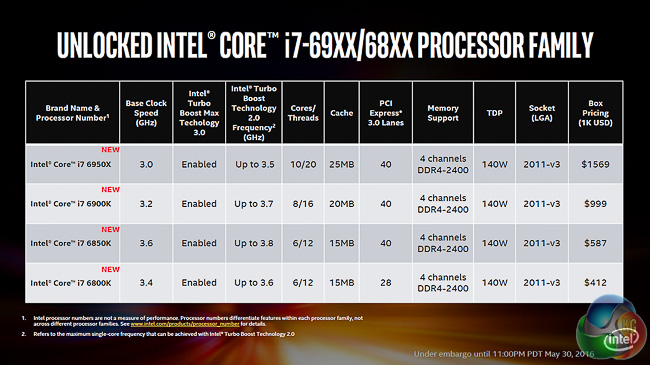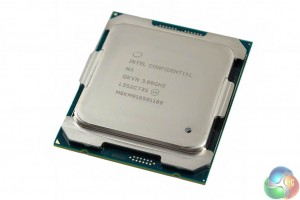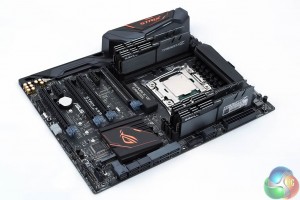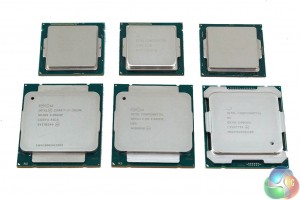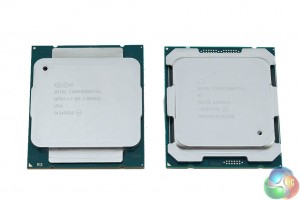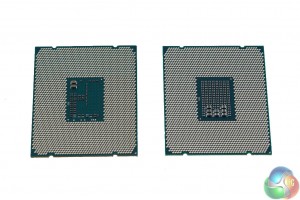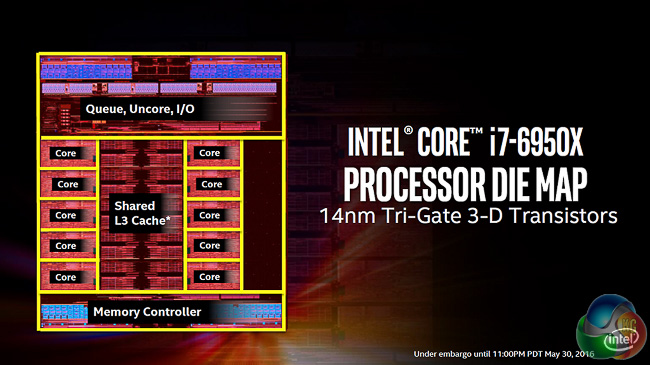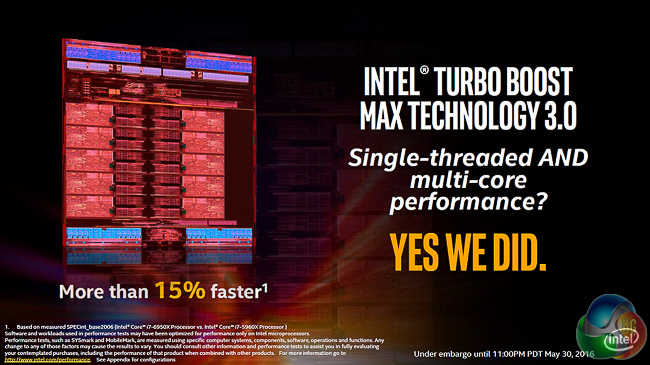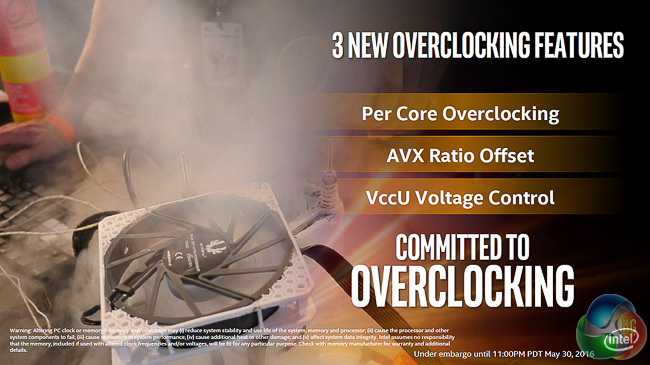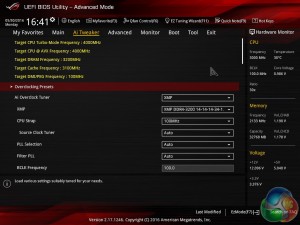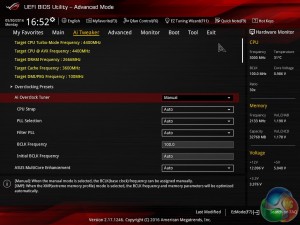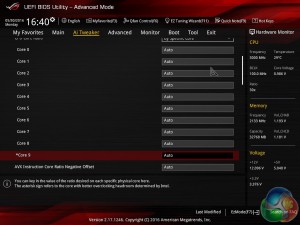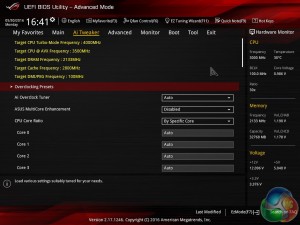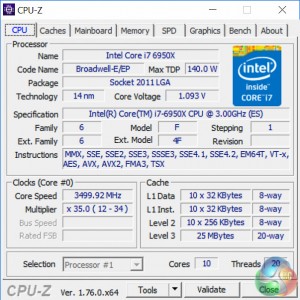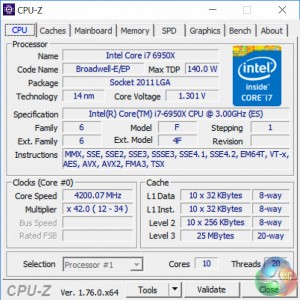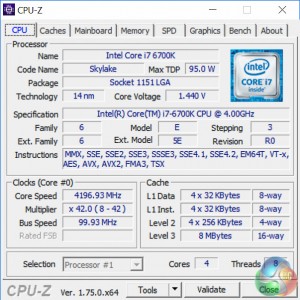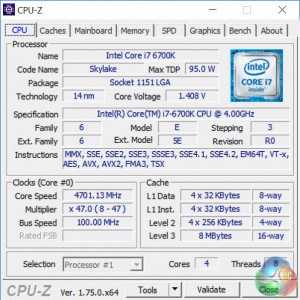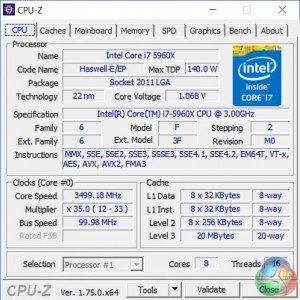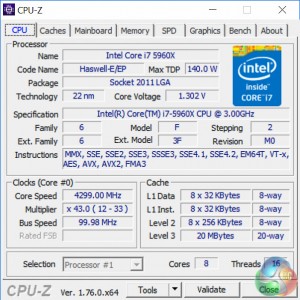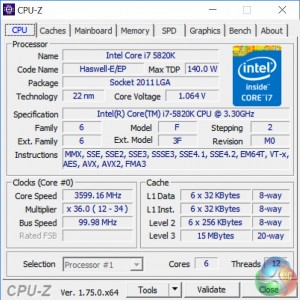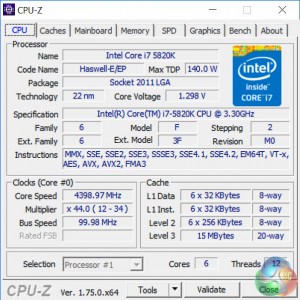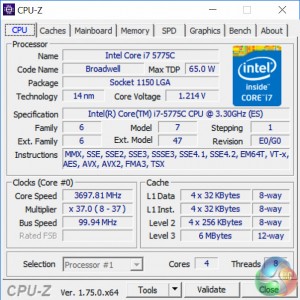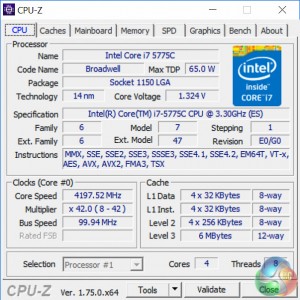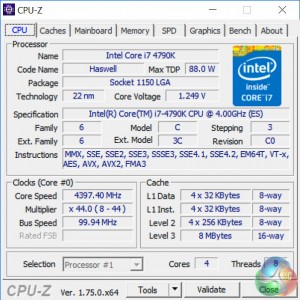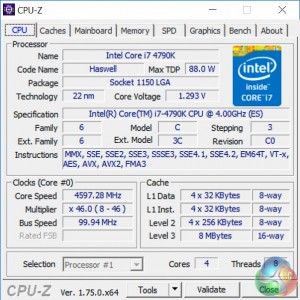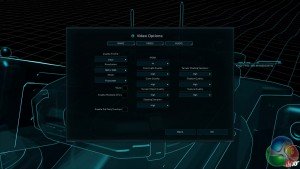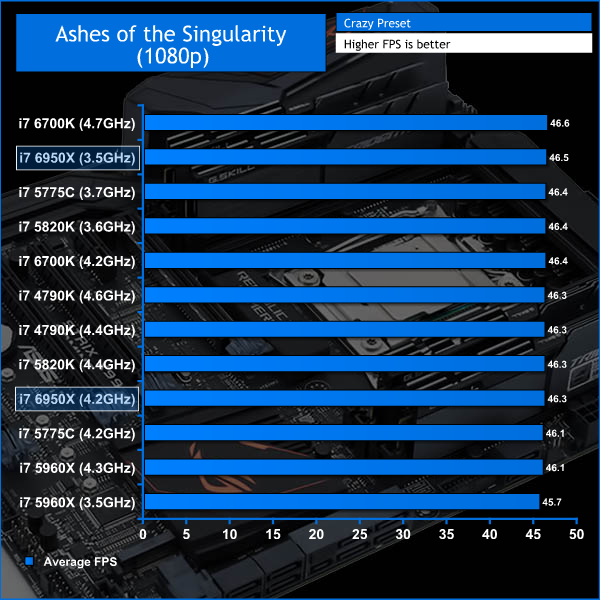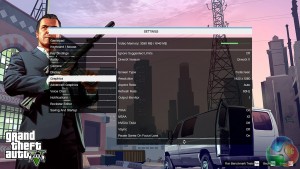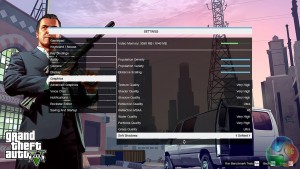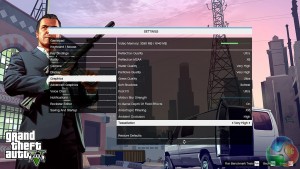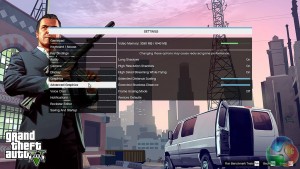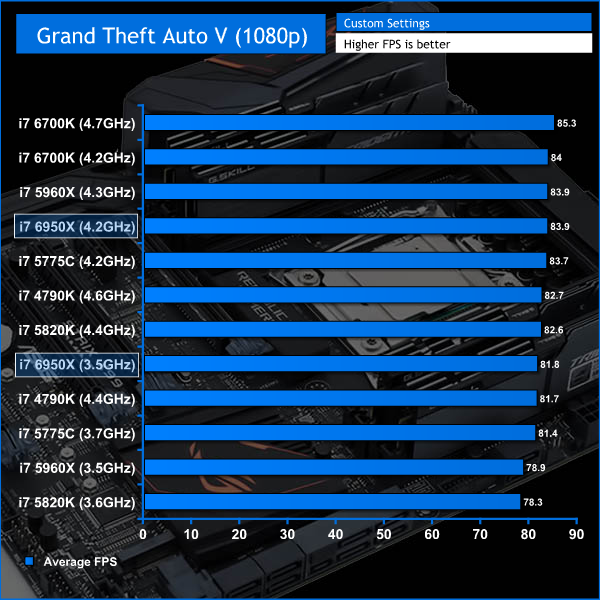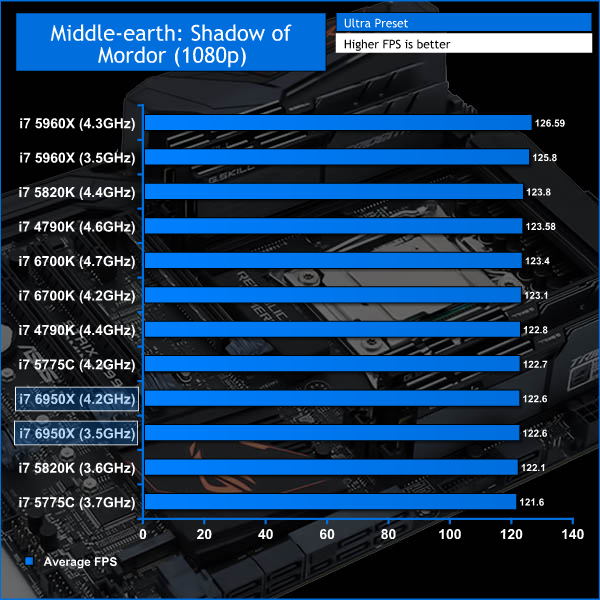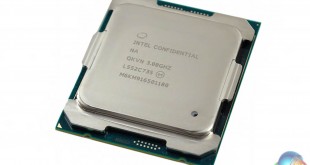
Intel's decision to skim over “Broadwell” CPUs on the mainstream LGA 115x platform meant that prior to today, the High End Desktop Platform (HEDT) was 2-generations behind the mainstream, and in need of a revamp.
The latest architecture from Intel, “Skylake”, has been with us since August 2015 on the mainstream platform but HEDT users have had to “make do” with Haswell-E since August 2014. Today Intel reduces the architectural gap back to 1 generation with Broadwell-E.
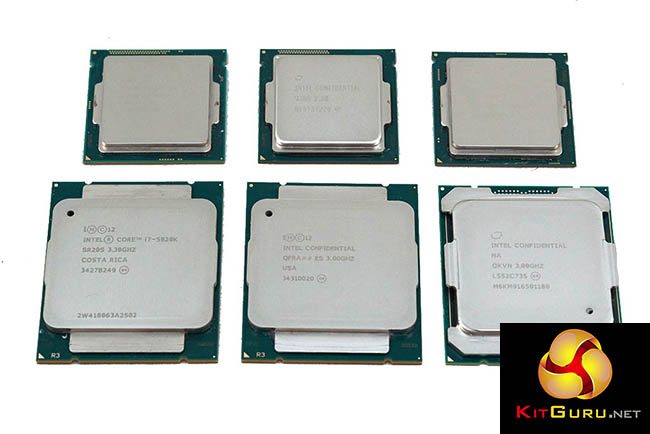
Broadwell-E is significant because Intel has decided to properly deploy the Broadwell architecture for the enthusiast audience. Broadwell for the mainstream desktop platform saw just two releases, the Core i7 5775C and Core i5 5675C, both of which were 65-watt parts with bolstered Iris Pro 6200 graphics.
Neither mainstream Broadwell part was marketed at the enthusiast audience and both parts failed to gain traction due to the lofty price compared to the i7 4790K and the fact that when released in June 2015, Skylake's i7 6700K was just 2 months away. That said, both are fully unlocked and overclockable parts that can be paired up with Z97 motherboards – even if overclocking headroom is somewhat limited.
Broadwell-E in its full-fat enthusiast form arrives with four different processors at launch, three closely mirroring previous generation parts and a new chip. The Intel Core i7 6800K replaces the Core i7 5820K which was the “bang for buck” processor of the Haswell-E generation. The i7 6850K is the successor to the i7 5930K, the processor of somewhat dubious appeal – it's only real advantage over the aforementioned CPU is 40 PCIe 3.0 lanes instead of 28.
Next up is the Core i7 6900K which is the spec-sheet replacement for the i7 5960X as it boasts the same price point, $999, and the same octa-core design. The new part is the flagship Intel Core i7 6950X – a deca-core, fully unlocked and enthusiast-grade Broadwell-E part. An Intel Xeon-level price point of $1,569 is sure to make the i7 6950X significantly more exclusive than last generation's flagship i7 5960X.
In for review at KitGuru is the top-flight Intel Core i7 6950X CPU which, while out of reach for most, will give you an idea of what Intel's Broadwell-E platform is capable of. However, in the near future KitGuru will endeavour to review the sweet-spot Core i7 6800K CPU.
In physical terms the i7 6950X conforms to the same LGA 2011-3 socket as the i7 5960X, this means it'll support all X99 motherboards on the proviso that motherboard vendors roll-out BIOS updates for Broadwell-E CPUs. At Broadwell-E's launch motherboard vendors have already refreshed or introduced many new X99 models, for our review we'll be working on the ASUS ROG STRIX X99 Gaming motherboard that we previewed a few weeks back as well as G.Skill's Trident Z 3200MHz DDR4 memory.
The Intel Core i7 6950X, bottom right, does illustrate a different design to the Haswell-E largely due to the different heatspreader design. That heatspreader is most likely soldered onto the die since it always has been for the HEDT platform, only the mainstream platform has used thermal paste since the Ivy Bridge generation.
In terms of dimensions the i7 6950X is no different to Haswell-E and will work with the same CPU coolers and motherboards. It's noticeably bigger than the Core i7 4790K, Core i7 5775C and Core i7 6700K (top left to right) which are the three flagship chips of Intel's last three mainstream architectures.
The LGA 2011-3 pin- arrangement used by the i7 5960X and 6950X (right) is identical, on close visual inspection. There are some differences in the centre-most area which now contains a more uniform and dense arrangement of transistors.
Intel didn't specify any notes or explanations for the physical changes on the underside but our guess would be more components are present to help smooth and stabilise the power delivery, we saw a similar thing between the Core i7 4770K and i7 4790K.
The i7 6950X transitions to a 14nm processor node from the 22nm with the i7 5960X, a “tick” in Intel's tick-tock development cycle. Perhaps this reduction in transistor size is why Intel has been able to increase the core count from 8 to 10 cores while still maintaining enthusiast-level clock speeds and overclockability.
The CPU's overall die layout, shown below, remains largely unchanged compared to Haswell-E which makes sense as a tick is a process node shrink not an architectural re-design. Intel didn't specify if the proportions and sizes of each of the key CPU components have changed since the previous generation.
A new feature that looks good on paper is Intel Turbo Boost Max Technology 3.0. Current Intel Turbo Boost technology that most people will be familiar with is version “2.0” and the i7 6950X also has this variation of Turbo Boost. The “up to 3.5GHz” figure specified for the i7 6950X derives from this Turbo Boost 2.0 behaviour, all other recent Intel processors (including all the ones being tested in this review) are Turbo Boost 2.0 compatible.
The new Turbo Boost 3.0 hasn't been very well elaborated on by Intel – there's not a detailed indication of how it works, what kind of maximum turbo frequency it can achieve and how this will vary by chip or number of cores being utilised. Nonetheless, our general interpretation is that it is like Nvidia's GPU Boost for Intel CPU, depending on various parameters (temperatures, power, voltage, core utilisation etc…) the CPU frequency will dynamically adjust.
Our brief experience with the Turbo Boost 3.0, which requires a driver to be installed (note: it is just a driver file, not software) was disappointing. The CPU would turbo no higher than 3.5GHz, under a variety of different single and multi-threaded workloads while the bulk of the Turbo frequency was spent at 3.4GHz. To us that seemed like standard Turbo behaviour which perhaps suggests that a BIOS or Operating System level setting is preventing Intel's Turbo Boost 3.0 from functioning.
Overclocking is quite similar to previous generations of Intel CPUs (prior to Skylake), the bulk of the frequency increase can be had by adjusting the multiplier and the core voltage but there are a number of other parameters for consideration, including some new features:
- AVX Ratio Offset – controls the frequency at which AVX applications run
- CPU Cache Frequency – controls the frequency at which the CPU's cache operates, this can benefit applications which interface frequently with the cache or system memory
- Per Core Overclocking – designate different clock speeds per core, according to ASUS Core #9 is the most capable
The base clock for Broadwell-E does not feature the same external clock generators found on Skylake and Z170, thus the BCLK plays a smaller role in Broadwell-E overclocking.
We overclocked each processor in our review to a level we deem achievable for the majority of CPU owners of each respective CPU. For the i7 6950X 4.2GHz was a possible to achieve frequency with reasonable voltage of 1.3, 4.3GHz was also achievable and stable at the same voltage though we heard reports from other media that their chips weren't stable at 4.3GHz. 4.4GHz or higher depends on the quality of the silicon and capability of cooling to tame additional voltage, we couldn't get stability at this frequency.
We left the AVX ratio alone, left the CPU cache frequency to its default Auto value and enabled our XMP profile. Interestingly, we found that when enabling our XMP profile ASUS auto-overclocks the CPU to 4GHz which requires 1.3 volts and drastically increases power consumption. As such, we brought the max ratio back down to 35 for our stock testing, in line with Intel's Turbo Boost 2.0 specification.
ASUS has a baked-in Broadwell-E 10 core preset, under overclocking presets, which opts for the following configuration:
- 4.4GHz on the first two cores, 4.3GHz on the next three cores, 4.2GHz on the sixth core and 4.1GHz on the last four cores;
- 3.6GHz cache frequency
- 4GHz AVX frequency
- 2666MHz DDR4 frequency
That largely confirms our expectations that 4.2~4.4GHz is where most 24/7 stable overclocks will be.
The AVX ratio on the ASUS motherboard operates as a negative off-set value – if you key in 5 for example, it will run the AVX frequency at 3.5GHz when the CPU frequency is 4GHz.
The per core overclocking works as you might expect: dial in a ratio and that core will run at the specified ratio when loaded.
4.2GHz, it seems, will be the minimum achievable all-core overclock by most i7 6950X owners. 4.3GHz is the sweet spot for frequency and voltage and 4.4GHz or more will be achievable to higher quality silicon and better cooling setups. Interestingly, these numbers are quite similar to the i7 5775C which is remarkable given that there are 10 cores with the i7 6950X compared to 4 on the i7 5775C.
We expect the lower core count Broadwell-E CPUs, such as the i7 6800K, will be able to clock higher.
For the rest of the CPU overclocks in our test we determined a representative frequency of what most users would be able to achieve (based on our own testing and forum feedback), though voltage will vary depending on silicon quality. Our stock frequencies were the fixed maximum Turbo Boost 2.0 frequency for each Intel CPU to offset the effects of variable Turbo behaviour between motherboards. All the stock and overclocked frequency CPU-Z screenshots can be found below.
Intel Core i7 6700K
Intel Core i7 5960X
Intel Core i7 5820K
Intel Core i7 5775C
Intel Core i7 4790K
Z97 Test System
- Processor: Intel Core i7 4790K and Core i7 5775C.
- Memory: 16GB (2 x 8GB) Corsair Vengeance Pro DDR3 2400MHz (10-12-12-31, 1.65v).
- Motherboard: ASRock Z97 OC Formula
- Graphics Card: Nvidia GTX 980 Ti.
- System Drive: Mushkin Chronos 120GB SSD
- Games Drive: Samsung 850 EVO 512GB SSD
- CPU Cooler: Corsair H100i w/ Noctua NTH1
- Power Supply: Seasonic Platinum 760W.
- Operating System: Windows 10 Pro 64-bit.
Z170 Test System
- Processor: Intel Core i7 6700K.
- Memory: 32GB (4 x 8GB) G.SKill Trident Z DDR4 3200MHz (14-14-14-34, 1.35v).
- Motherboard: ASUS Z170 Pro Gaming.
- Graphics Card: Nvidia GTX 980 Ti.
- System Drive: Mushkin Chronos 120GB SSD
- Games Drive: Samsung 850 EVO 512GB SSD
- CPU Cooler: Corsair H100i w/ Noctua NTH1
- Power Supply: Seasonic Platinum 760W.
- Operating System: Windows 10 Pro 64-bit.
X99 Test System
- Processor: Intel Core i7 5820K, i7 5960X and i7 6950X.
- Memory: 32GB (4 x 8GB) G.SKill Trident Z DDR4 3200MHz (14-14-14-34, 1.35v).
- Motherboard: ASUS ROG STRIX X99 Gaming.
- Graphics Card: Nvidia GTX 980 Ti.
- System Drive: Mushkin Chronos 120GB SSD
- Games Drive: Samsung 850 EVO 512GB SSD
- CPU Cooler: Corsair H100i w/ Noctua NTH1
- Power Supply: Seasonic Platinum 760W.
- Operating System: Windows 10 Pro 64-bit.
Software tests:
- 3DMark – Firestrike (1080p) test.
- WPrime – 1024M and 32M pi calculations.
- Cinebench R15 – single-core and multi-core CPU tests.
- SiSoft Sandra – Memory bandwidth test sequence.
- AIDA64 Engineer – memory bandwidth and latency test, system stability test for power consumption and temperatures.
- Handbrake – video file transcoding of a HD movie into the Android preset.
Games:
- Ashes Of The Singularity – built in benchmark tool at 1080p using the Crazy detail preset.
- Middle-earth: Shadow of Mordor – built-in benchmark tool at 1080p using ultra preset.
- Grand Theft Auto 5 – built-in benchmark tool at 1080p with custom settings.
Cinebench R15
CINEBENCH is a real-world cross-platform test suite that evaluates your computer’s performance capabilities. CINEBENCH is based on MAXON’s award-winning animation software Cinema 4D, which is used extensively by studios and production houses worldwide for 3D content creation. MAXON software has been used in blockbuster movies such as Iron Man 3, Oblivion, Life of Pi or Prometheus and many more.
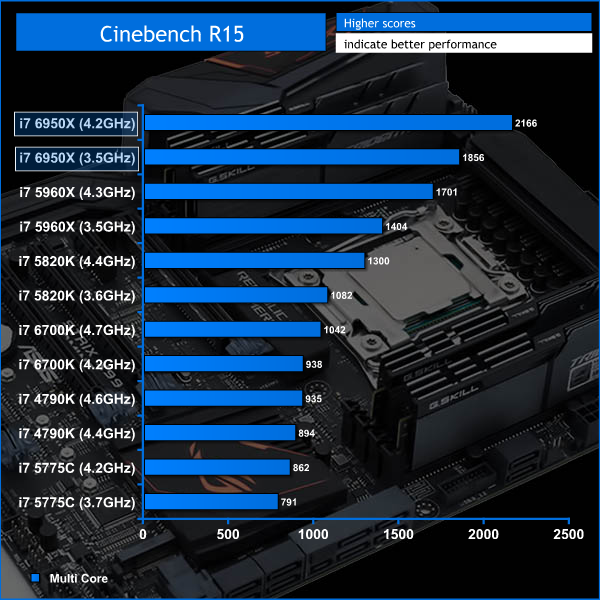
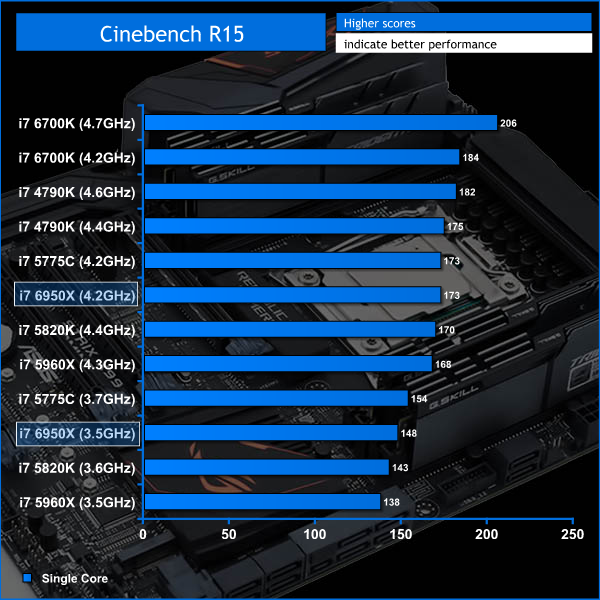
Cinebench is a benchmark that scales the neatest of all benchmarks out there and reproduces consistent results. The performance of the i7 6950X is quite simply mind-boggling, over 2000 points when overclocked and even at stock speeds an overclocked i7 5960X isn't capable of matching the i7 6950X.
Single threaded performance is less exciting – Broadwell falls behind Haswell's i7 4790K, due to a clock speed disadvantage, and Skylake's i7 6700K, due to both a clock speed and IPC disadvantage. Single threaded performance matches the i7 5775C when both are at 4.2GHz, as you might expect given that they share the same architecture.
WPrime
wPrime is a leading multithreaded benchmark for x86 processors that tests your processor performance by calculating square roots with a recursive call of Newton's method for estimating functions.
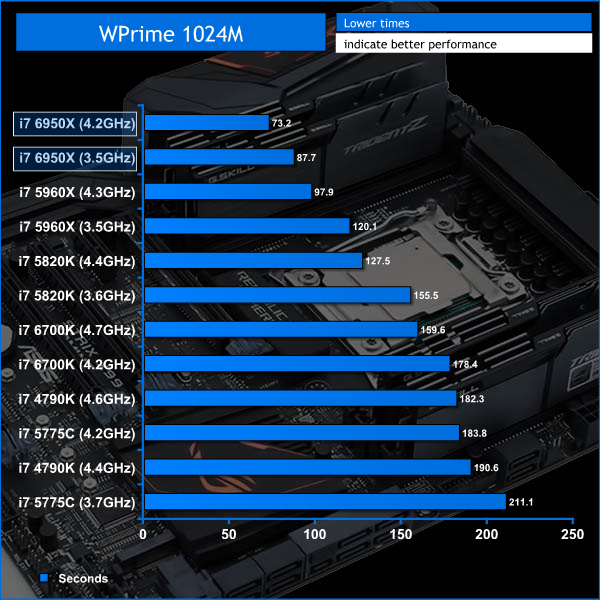
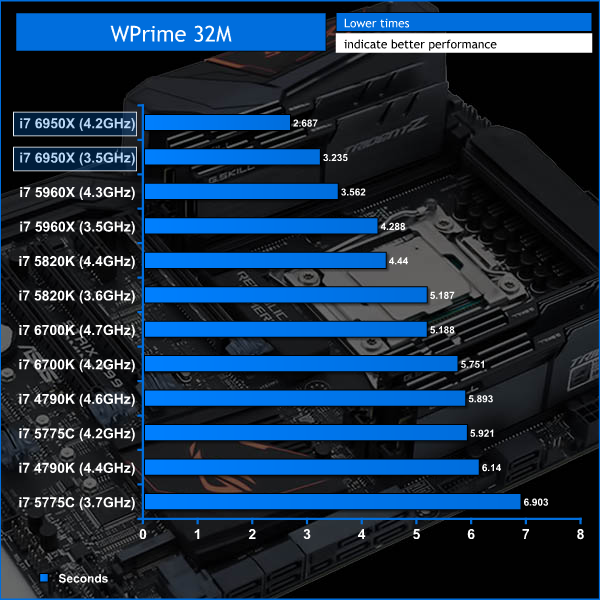
WPrime is a multi-threaded benchmarks that divides the workload equally across each thread. With 20 threads in its arsenal the i7 6950X dispatches of every other CPU in our testing with relative ease. It's more than twice as quick as an overclocked Core i7 6700K at calculating both 32 million and 1024 million digits of pi.
Handbrake
HandBrake is an open-source, GPL-licensed, multiplatform, multithreaded video transcoder.
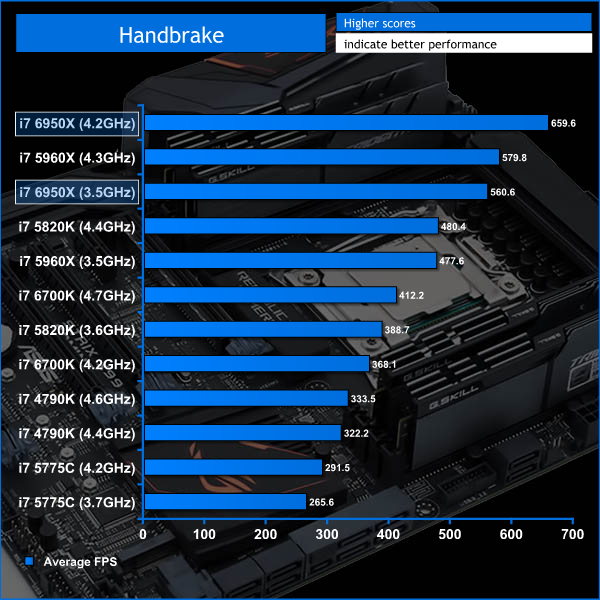
Handbrake is able to take advantage of more cores and threads to increase the average frame-rate for video encoding or transcoding. The i7 6950X, with 20 threads, is able to transcode the same video file twice as quick as an i7 4790K. The gap isn't as wide as in WPrime because transcoding isn't just raw number crunching, nonetheless the i7 6950X is much quicker at dealing with video files.
Any person involved in content creation with video media could get a significant boost in productivity by moving away from Intel's mainstream platform. The improvement over the previous generation i7 5960X of 20 per cent is perhaps not enough to tempt Haswell-E owners to upgrade.
AIDA64
AIDA64 implements a set of 64-bit benchmarks to measure how fast the computer performs various data processing tasks and mathematical calculations. Multi-threaded memory and cache benchmarks are available to analyze system RAM bandwidth and latency.
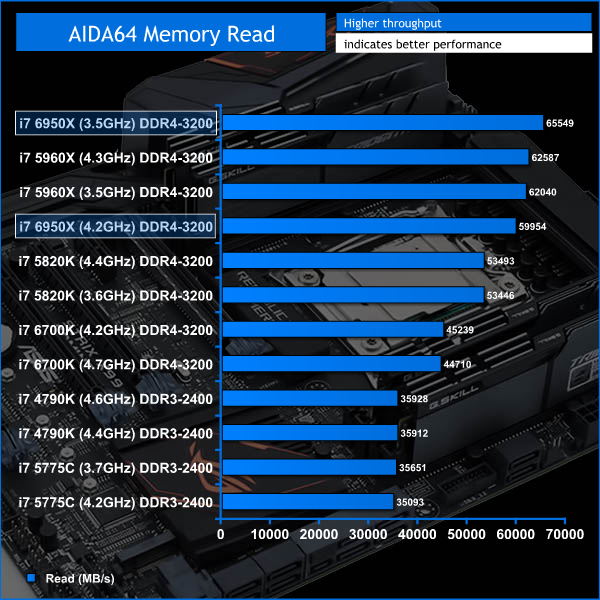
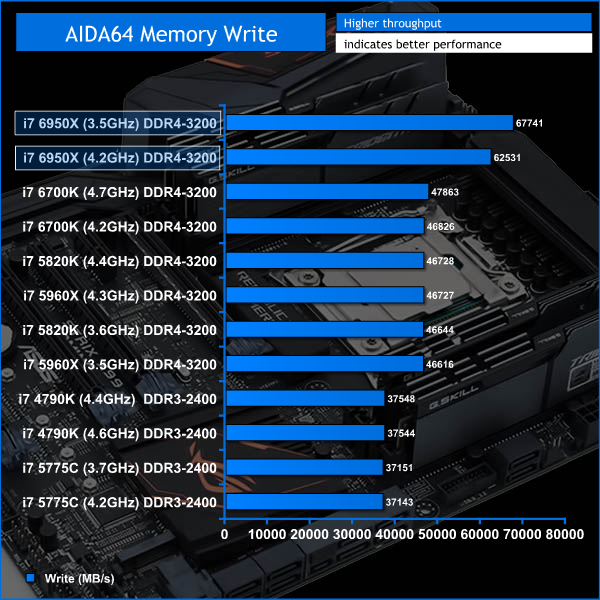
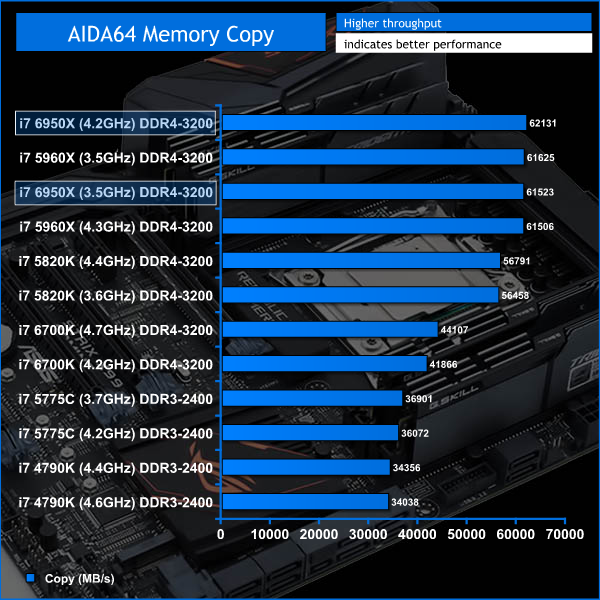
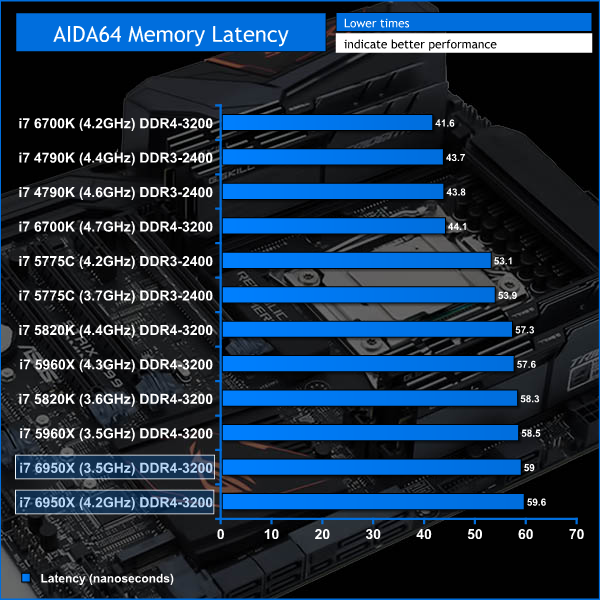
The i7 6950X offers small generational improvements in memory read and copy, and those results could be boosted further by increasing the CPU's Cache frequency as post-Haswell architectures are particularly responsive to this type of tuning. An area that showed impressive performance growth was memory write, which jumped a whopping 45 per cent over the i7 5960X.
Memory latency was roughly on par with Haswell-E and is a fair bit slower than mainstream parts as more memory channels have to be addressed, four instead of two.
SiSoft Sandra 2016
Sandra is a multi-function software utility produced by UK company SiSoftware which includes remote analysis, benchmarking and diagnostic features for PCs, servers and networks.
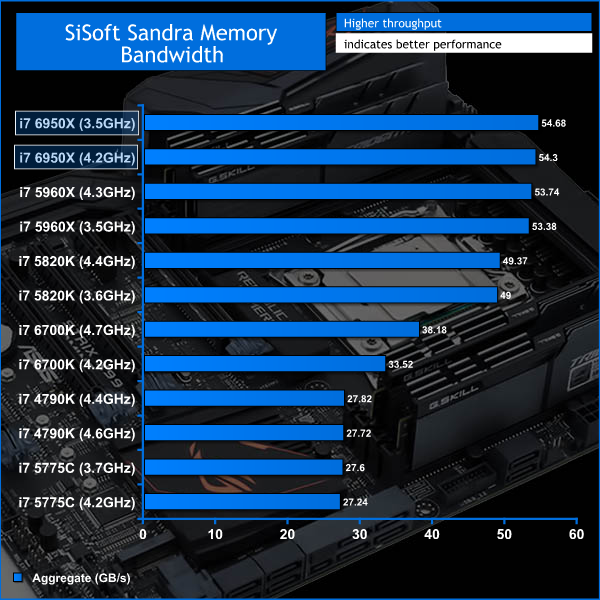
SiSoft's memory bandwidth test shows a much narrower gap between Haswell-E and Broadwell-E, though this is hardly unexpected given that both systems are quad-channel by design and are being benchmarked with the same memory kit.
3DMark
3DMark is an essential tool used by millions of gamers, hundreds of hardware review sites and many of the world’s leading manufacturers to measure PC gaming performance.
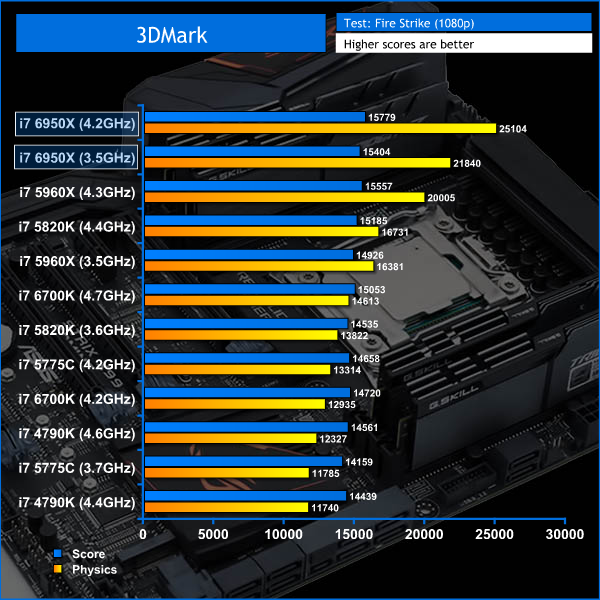
3DMark is one of the only 3D applications where overall score scales in line with CPU processing power. This is due to the fact the Physics portion of the test contributes directly towards the final score and the Physics test is a function of multi-threaded CPU capability. As such the i7 6950X easily tops the chart but as we'll see this doesn't necessarily play out in real world gaming.
Ashes of the Singularity
Ashes of the Singularity shows a narrow FPS range of 45.7 to 46.6 across all CPUs in stock or overclocked results. That's just 0.9 FPS to separate all CPUs which implicates that it's a heavily GPU-bound game, at least at this resolution and detail level.
Grand Theft Auto V
GTA V showed a wider variety of results, 78.3 to 85.3 FPS which is a variation 7 frames per second. GTA V seems to benefit from a mixture of better IPC and higher frequency, but doesn't seem to make much use of more than 4 cores, so it's not surprising Intel's mainstream i7 6700K comes out on top. The i7 6950X performs well when stock or overclocked but having 10 cores doesn't yield much advantage here, as you might have expected.
Middle-earth: Shadow of Mordor
Shadow of Mordor delivered consistent results for all CPUs that are within margin of error, with exception to the i7 5960X which, for some reason, edged all other CPUs out by a margin of 2-3 FPS.
It seems for gaming that the extra cores and total processing power of the i7 6950X are not fully utilised. The mainstream platform is equally as good if not slightly better and much more cost effective. That is, at least, until most games start to favour more than 4-6 cores and rely less on frequency, if they ever do.
Power Consumption
We measured peak system power consumption during a 10-minute AIDA64 system stress test with the options stress CPU, stress FPU, stress cache and stress system memory selected. This was measured at the wall using an Energenie power meter.
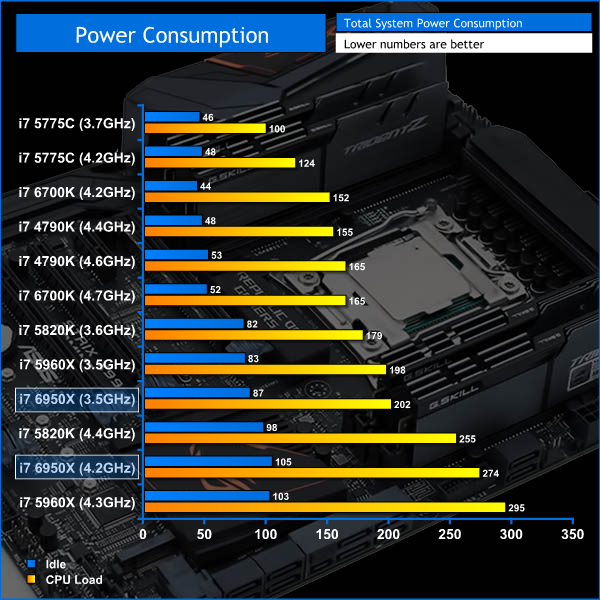
System power consumption for the i7 6950X is roughly the same as the i7 5960X at stock settings, when overclocked the i7 6950X is about 20-watts more frugal on power for the same voltage and nearly the same frequency. When considering there are two more cores being deployed on the i7 6950X compared to the i7 5960X, those numbers are even more impressive, the efficiency of Broadwell is certainly nothing to scoff at.
Temperatures
We measured the maximum CPU temperature, using core temp, from the same 10 minute AIDA64 stress test used to acquire power consumption figures. We then take an average temperature across all cores (excluding the package temperature), record the ambient temperature, and then calculate a Delta figure (actual temperature – ambient temperature).
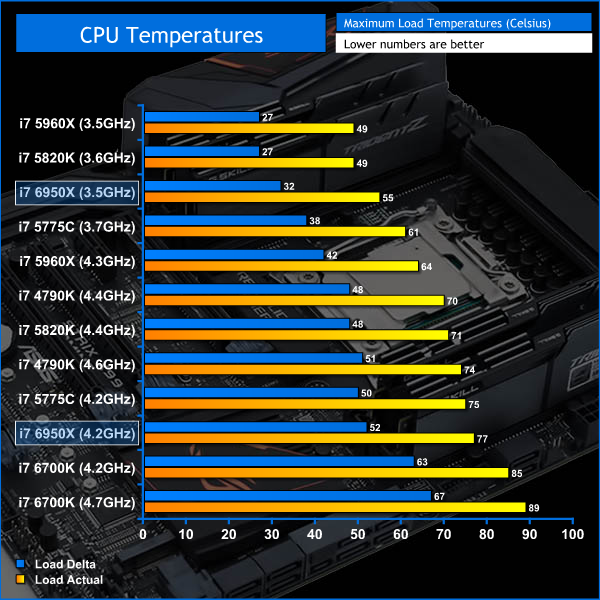
While total power consumption is less for the i7 6950X, which means total thermal output (heat) is less, temperatures are a notable amount higher than the i7 5960X. Temperatures end up being higher due to the increased density of transistors and cores on the Broadwell-E die, but a Corsair H100i is still able to easily cool the i7 6950X on a relatively quiet fan profile.
Initial performance and overclocking results from the Broadwell i7 5775C and i5 5675C processors back in 2015 suggested the Broadwell architecture wouldn't clock as high as Haswell equivalents and this has mostly panned out to be accurate with Intel's Broadwell-E platform.
Yet, it's perhaps not as bad as some may have anticipated: the i7 6950X tops out at around 4.3~4.4GHz, the i7 5960X tops out at around 4.4~4.5GHz. There is a slight reduced frequency penalty, margin of error if being pedantic, but if you take into consideration that this occurs with two additional cores compared to the Haswell-E predecessor, then it seems Intel has actually pulled off an impressive achievement.
Intel is well aware of the fact the i7 6950X is an impressive halo-product as indicated by MSRP of $1,569, UK pricing is currently £1,399.99 at Overclockers UK. Without a doubt this is the most expensive consumer Intel CPU to date, second only to many of Intel's enterprise-level Xeon CPUs. The pricing of Intel's current Broadwell-EP likely plays a role in why the price of this CPU is such – too affordable and potential Xeon customers may lean towards the i7, too expensive and i7 customers may lean towards a Xeon.
There is no direct equivalent to the i7 6950X in the Xeon range though, the closest 10-core is probably the Xeon E5 2640 v4 which has a base clock of 2.4GHz and boost clock of 3.4GHz for $939. Notably with a Xeon there is no overclocking support and the TDP of 90W means Turbo behaviour will be, on average, clocked much lower than the i7 6950X.
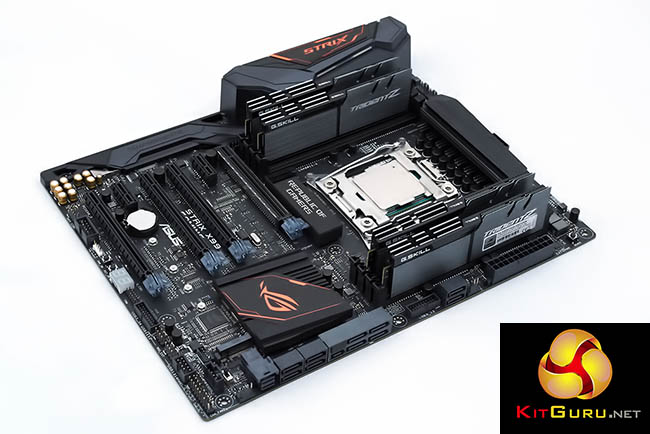
With such a steep price point it is difficult to recommend the Intel Core i7 6950X to just any user as most applications, particularly games, are unlikely to make use of the extra 6 cores above the quad-core baseline. Though the i7 6950X has been made more attractive to gaming and enthusiast users in recent months by the fact motherboard vendors have refreshed many of the X99 motherboards aimed at gamers and enthusiasts. The ASUS ROG STRIX X99 Gaming we used for this review is a fine example.
To recommend the i7 6950X as the basis for gaming platform would be a questionable thing to do unless potential buyers have alternative uses of their systems that can fully exploit the potential of the i7 6950X, the same also applies for the 8-core i7 6900K. Anyone involved in content creation, particularly video editing, rendering or transcoding, or making using of highly multi-threaded and computational intensive applications may well benefit – if they haven't already opted for a Xeon platform.
As a way of making X99 viable for gaming or general enthusiast uptake we're keen to observe what the i7 6800K will be capable of with its more palatable $412 MSRP, or £379.99 for UK readers at Overclockers UK. With “only” 6 cores it should be able to clock higher than the 8 & 10-core behemoths, around 4.5~4.6GHz, and that frequency is high enough for it to give the $327 Core i7 6700K quad-core a run for its money in applications geared for 1-4 cores.
In the bigger picture it is hard to be critical of Intel's Broadwell-E since the company faces no competition in this high-end market segment – it's only competition is itself. As such the company can more or less charge what it wants since the only other alternatives are previous-generation Intel HEDT or Xeon CPUs.
Pros:
- Class-leading multi-threaded performance
- Refreshed motherboards available
- Improved power consumption over previous-gen
Cons:
- Single-threaded performance cannot match Skylake
- Some applications aren't optimised for high core counts
KitGuru says: Intel's Core i7 6950X is the new fastest consumer processor, an efficient and overclockable deca-core that's as desirable as it is expensive.
 KitGuru KitGuru.net – Tech News | Hardware News | Hardware Reviews | IOS | Mobile | Gaming | Graphics Cards
KitGuru KitGuru.net – Tech News | Hardware News | Hardware Reviews | IOS | Mobile | Gaming | Graphics Cards


